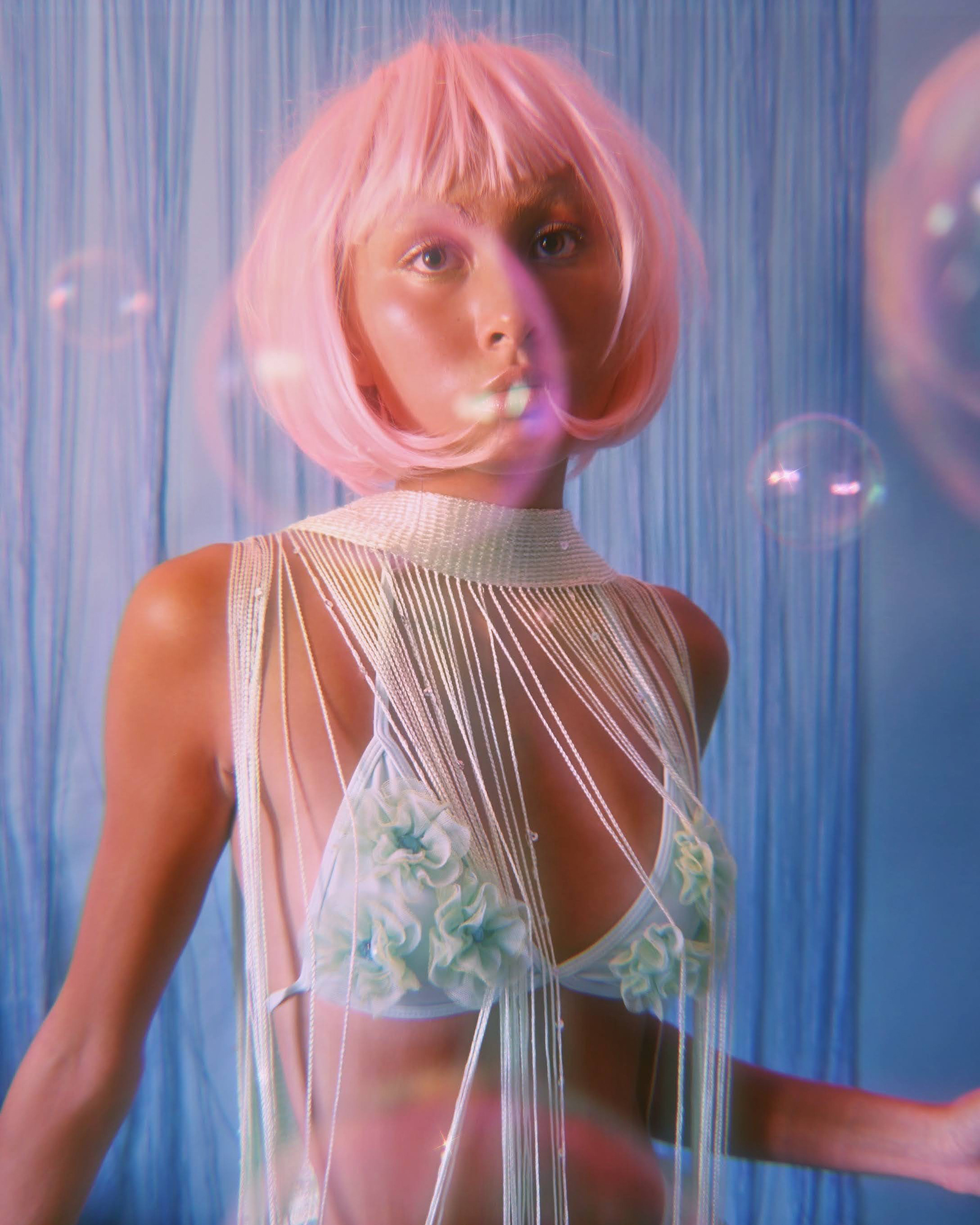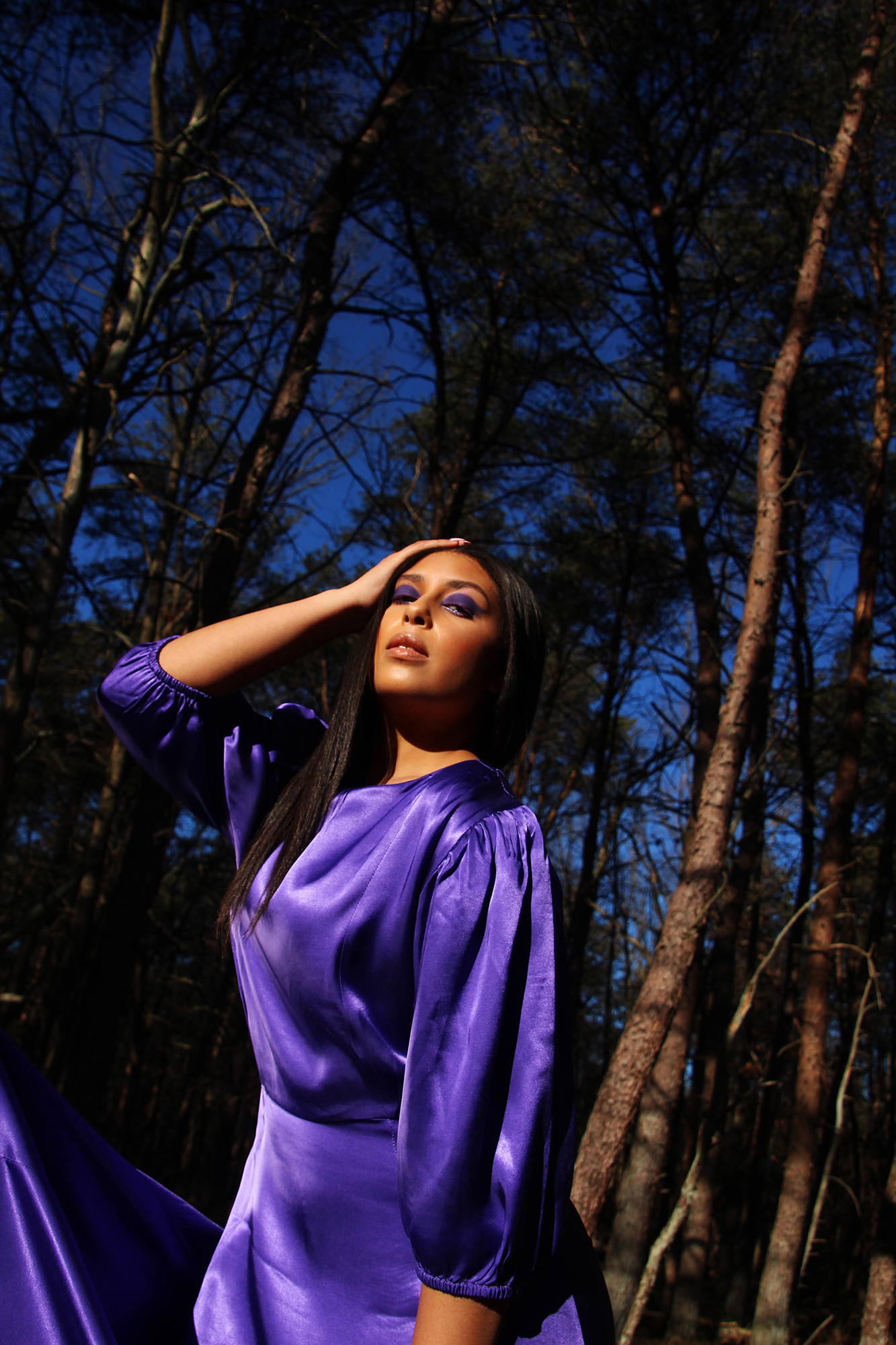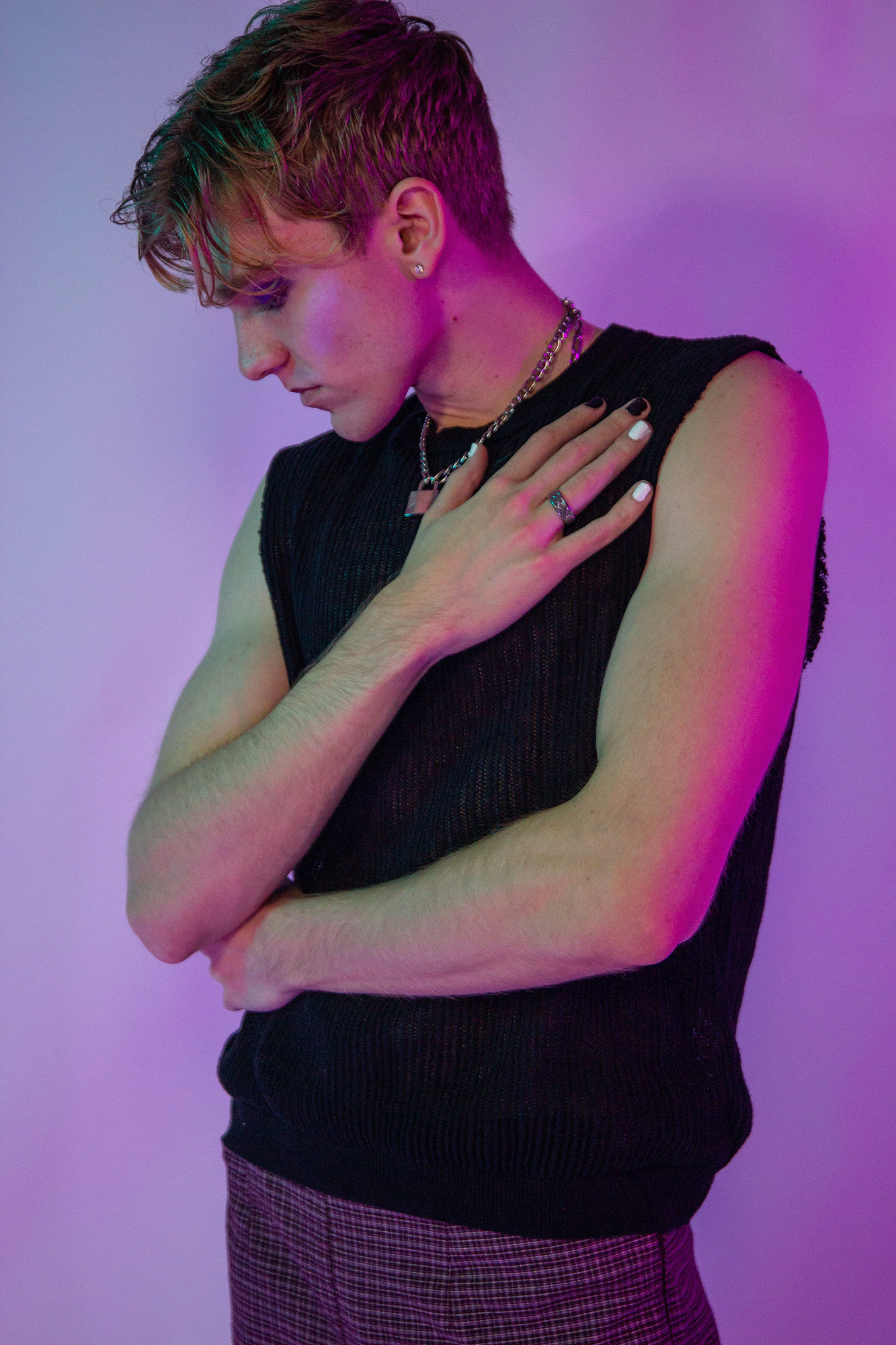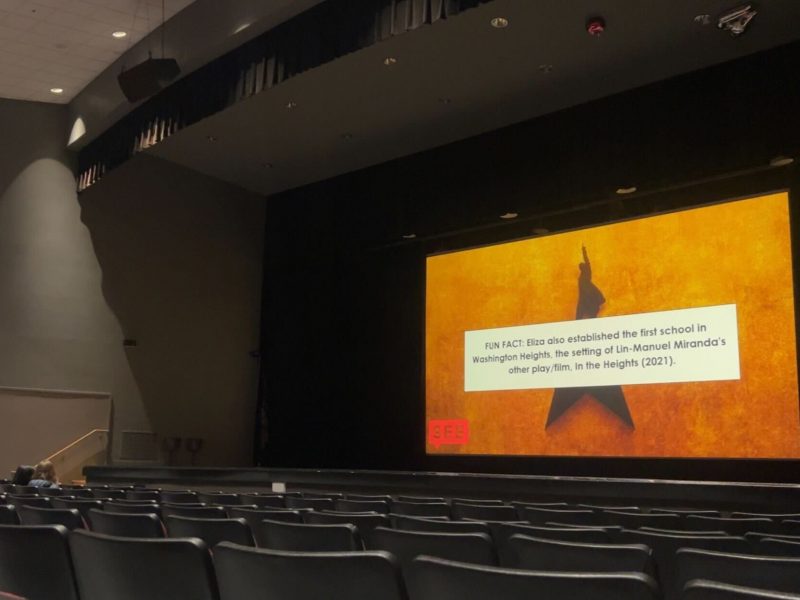It was 5 p.m. in Paris, and Erin Garry was thinking about her baby. Not a human baby — but nonetheless the product of hours of care, labor and creation. Monumental Magazine is Garry’s brainchild, and it’s growing up.
Garry came up with the idea for a student-powered fashion magazine in 2019, and spent the next year building the brand, creating content and gathering a team. She started off overseeing everything, every day of the week.
“To me, it was like my baby too, so I was a bit hesitant to delegate without fully knowing everyone,” Garry said.
But as the magazine grew, she found a team to entrust Monumental to — a team that would eventually be responsible for putting out the first issue in February 2021.
In 2019, Garry thought of starting a fashion magazine at the University of Maryland — something the school didn’t have. Garry wanted to work in fashion from a young age, and while student-run publications exist at this university that cover fashion and lifestyle, Garry said she couldn’t find any classes or clubs solely focused on the topic or catered to her interests.
It wasn’t until she took a fashion media course in Florence, Italy, an ocean away from the university, that she came up with the idea behind Monumental Magazine.
Almost two years later, and a year after Garry graduated from this university with a bachelor’s degree in communications and then moved to Paris to pursue her master’s degree, a team of almost 50 students launched the magazine’s inaugural issue: “The Intention Issue.”
Monumental’s introductory cover, showing a model donning white rounded sunglasses and a floral head scarf looking upward and onward past the margins, leaves no room for misinterpretation: The brand is confident, capable and looking toward a future of more.
The team didn’t have a precedent, a large staff or Student Government Association funding, but students were attracted to Monumental because it provided a platform for fashion and lifestyle journalism that many said this university lacked. Now, they’re preparing to release their next edition.
“People are doing this extracurricular because they want to,” Garry said. “It just really shows that it’s a labor of love and something that people genuinely enjoy doing.”
Filling a void
One of the first necessities for Garry — and arguably the most important — was establishing a name. And fashion magazines typically don’t just have names — they have brands. It’s about everything the name stands for.
The word “monumental” means something important, enduring and larger than life-size.
“Since nothing like that existed on campus, I thought it was a fitting name,” Garry said.
Garry pulled inspiration from Washington, D.C., because of its historic monuments and proximity to this university, she said.
For the brand around that name, the magazine established its mission statement, listing three goals: promoting inclusivity and sustainability, producing unique visual content by taking creative risks and promoting and supporting young creatives.
In the creation phase, Garry worked on the magazine every day, about 15 hours a week, she said. Garry said she was nervous no one would be interested. But she quickly found that this wasn’t the case as she built a cohort of about 15 people.
Kassidy McDonald, the magazine’s current editor in chief, was among the first to join the Monumental team and ultimately helped to realize the first issue.
“I was so excited when I heard about this because I know in the journalism school, there wasn’t something that stood out to me,” said McDonald, a rising senior journalism major.
The university does not currently offer fashion merchandising or design programs, nor did it have a student publication solely dedicated to fashion or lifestyle, something McDonald said was disappointing.
“I feel like we’re a really big school and a lot of people are really into that, and there’s not really a platform for it,” McDonald said.
This was also true for Kyle Faresich, who graduated from this university in May after studying communications. His piece, “The Rise of Feminine Masculinity,” was featured across four pages in the issue. He was the writer, creative director, stylist and a model for the photoshoot.
Faresich told then Editor-in-Chief Natalie Leinbach that he had never run a photoshoot, with no experience in styling or working camera angles. But Faresich said this wasn’t a problem for Leinbach.
“She was like, ‘That’s totally okay, this whole magazine is meant for people to dip their toes into the creative aspects that they’ve never got to actually go through with in college,’” Faresich said.
Faresich started at the university as a journalism major, but ultimately switched to studying communications because he didn’t find publications on the campus that explored content he was interested in, such as fashion and lifestyle.
“I would just really want to emphasize I do appreciate that this magazine came about,” Faresich said. “I feel like magazine just isn’t on the table in the journalism school, so it’s cool to actually have a fashion and lifestyle magazine on campus to resort to [for] any creative visions that you might have.”
The journalism college does not currently offer abundant classes for students interested in feature writing, entertainment and culture reporting or a magazine journalism track.
In an email to The Diamondback, journalism dean Lucy Dalglish said, “Discussions have been underway over the summer about adding more features/entertainment/culture reporting and writing courses. However, we do not anticipate adding a magazine specialization that would offer multiple such courses in a sequence at this time.”
In a statement to The Diamondback, university communications director Natifia Mullings wrote, “We have academic majors in marketing, communications, journalism and studio art, as well as several departments that allow students to focus their studies on fashion.” Mullings also wrote students are encouraged to reach out to the Office of Undergraduate Studies if they’re interested in building their own academic program.
For rising sophomore Katherine Mahoney, a journalism and studio art major, Monumental was her introduction to this “other” side of journalism — the side Faresich, McDonald and Garry all felt was lacking in the journalism school.
Mahoney works at the magazine as a layout and design co-director and helped to assemble the first issue, all before she’s had her first in-person college class.
“I feel like in journalism classes, you test the waters with sports or broadcast and actual news or community news, but you never really go into fashion,” Mahoney said.
For Mahoney, Garry and the team, putting out the first issue, “The Intention Issue,” was a moment of pride.
And it was a moment Garry had planned to be a part of in 2019, but as the COVID-19 pandemic hit and the university went online for the remainder of the 2020 spring semester, plans changed.
“We’d hoped to produce the first issue spring 2020, but obviously that didn’t happen,” Garry said. “We started to plan, and then everything kind of went to shit.”
[‘SNAPPED’: Before and after a UMD alumna’s breaking point in Greek life]
Garry graduated last spring — online.
But Monumental lasted through its first turnover and a pandemic to produce their founding issue, which was dedicated to Garry.
“The Intention Issue”
Titled “The Intention Issue,” the theme is meant to reflect the “unique opportunity” almost a year of lockdown gave for introspection, wrote then Editor-in-Chief Natalie Leinbach, who succeeded Garry, in the issue’s introduction.
Leinbach, in her letter from the editor, carefully outlines perspectives and questions provoked in the pages — questions of purpose, quality, direction and opportunity, all framed within the context of fashion and lifestyle. The issue touches on topics that intersect with beauty and fashion such as sustainability, quality, race and gender identity. The pages also include product reviews and trend tracking as well.
Arranged across 60 pages are 11 stories and five photo spreads spanning multiple pages, made from the efforts of about 50 students.
Faresich’s piece about feminine masculinity lives across four of those pages, with 10 pictures interspersed throughout an article that talks about the history of gender-fluid fashion, the fluctuation of trends and changing expectations.
Faresich’s piece is lit with purples, pinks and blues — colors often used in cinema to illuminate a character’s sexuality or queer identity — and covers topics from the clothing choices of Will Smith and Harry Styles to men dressing in feminine clothing during the Civil War as a form of entertainment. The layout intertwines the mediums, with bold, vibrant images providing a break between sections of text, illustrating the cohesiveness of the magazine as a whole.
There’s a meshing of styles and designs, giving the book a feeling of individuality coexisting. The varying typography and art mediums used to tell the stories make it reminiscent of indie magazines and experimental pieces.
But behind the vibrant and dynamic pages were hours of producing, editing and learning, made possible by the funds raised from a GoFundMe page, which has raised more than $2,000.
McDonald had requested SGA funding for the magazine prior to the first issue’s release to help cover photoshoot and creative production costs, but the request was denied due to funding and management discrepancies.
Monumental creators are savvy with their production, however, and use their own resources to style a project, McDonald said.
“[There are] ways you can do it without spending a huge amount of money,” she said.
Emma Rubino, the senior marketing, promotions and public relations manager for the magazine, nodded to the cohesive mixing of media throughout the issue.
“I think that everyone does such a good job of really putting in the time and effort to be intentional with what they are researching,” Rubino said. “And I think that’s what really makes all the issues come together and work.”
For Mahoney, who worked to assemble pages using InDesign, this experience helped her realize her interest in graphic design. And seeing the finished piece, Mahoney said she felt proud of what they had produced. She wants readers to give the piece due diligence and not just gloss over the pages.
“Definitely have an open mind and realize that even though it is a college magazine … I feel like it seems like it’s higher than that,” Mahoney said. “The journalists or other students who actually write these articles … they don’t feel like they’re just college students just doing it for extra time.”
Brian Cleveland, who works as a multiplatform editor for The Washington Post, taught a news editing course at this university, which McDonald was in during the spring 2020 semester. Cleveland also taught Garry in a previous class, so he knew of Monumental as it was in development.
“I thought that they did a really great job,” he said. “It looked really nice, very professional.”
He noted the theme was fitting for college students navigating an inaugural issue amid a pandemic, adding that seeing former students, young journalists, bring an idea to life was nice.
“I am very proud of them,” Cleveland said. “I think it’s very easy to have an idea of something … but actually bringing that to fruition is very hard, you know, that takes a lot of dedication, it takes a lot of effort and time.”
With the launch of the issue, each student involved had to put a piece of themselves out there, and producing a project like this can become a challenge. Rubino and McDonald, along with Jessie Garten, the magazine’s digital and web manager, all said they each took their own risks in the issue, from writing about unfamiliar topics to exploring politics as it relates to fashion.
McDonald said she read over the pages a “crazy” number of times, editing and looking for any errors — ultimately only a couple minor spelling mistakes got past them, she said.
And as the team looks forward to their second issue, McDonald said their experience working remotely last time has prepared them for the second time around.
“We did it mostly remote last year,” she said. “So we’re gonna pull it off, of course.”
Revival
Monumental Magazine announced in July that their second digital publication, “The Revival Issue,” will be released on Aug. 30, the first day of this university’s fall semester classes.
According to McDonald, the upcoming edition will be colorful and eye-catching, with the same categories as the first issue — fashion, culture, beauty, lifestyle and campus. However, it will delve more into changes coming out of the pandemic.
“A couple pieces in this edition discuss how the pandemic has affected people personally whether it’s affected mental health/class/personal life/relationships, and how this period moving towards being normal again calls for a revival of creativity, new ideas, and new projects,” McDonald wrote in an email, adding that the magazine will examine a post-pandemic fashion industry and the resurrection of certain trends.
[Activists say developing Guilford Woods will displace wildlife, exacerbate flooding]
The Monumental team is also looking to expand their staff and positions, McDonald said.
Garten, a rising senior studying communications, said the hope is once people write one story, they’ll feel drawn to stay on and continue into a position.
“It’s a very inclusive environment that when they write that one article, they want to do more and then it turns into a more dedicated position, which I think is important,” said Garten, adding that’s how she originally got involved.
While promoting diversity is one of the values in their mission statement, McDonald acknowledged there’s room for growth within the organization.
“I definitely think that we can always be more inclusive. Recently, I don’t think we’ve had as much push as we did earlier last year,” McDonald said. “But I feel like that’s something everyone can always work on.”
With the magazine’s foundation not far in the rearview, the team is looking to ensure their respective positions will be filled before graduation. Underclassmen such as Mahoney have already started learning higher roles, which Garten said is really nice.
“I hope it stays like that in the future,” Garten said. “We have a couple girls who have contributed so much, a couple freshmen already — which is really promising.”
So far, Monumental has lived up to its name, enduring creation, turnover and an unrelenting pandemic.
Sitting in her tiny studio apartment in Paris near the Louvre Museum, Garry, who is now studying at the American University of Paris to get her master’s in global communication, reflected on the magazine she called her baby and the pride she felt reading the first issue.
“It was so cool to see it come to life and I was really impressed, especially given the year that they had,” Garry said. “Just to have that I thought was really awesome — and made me proud.”
This story has been updated.






